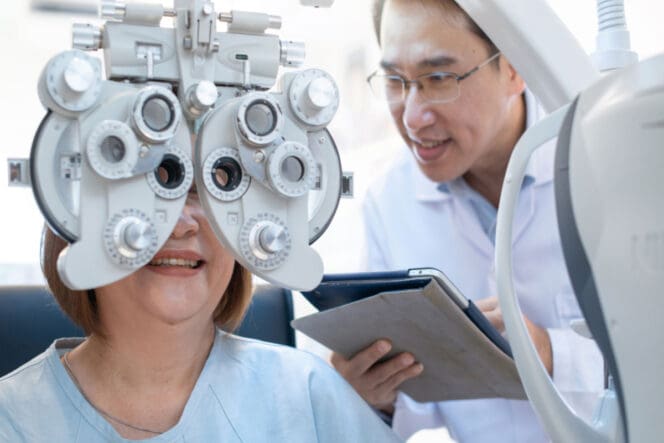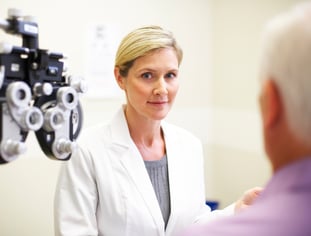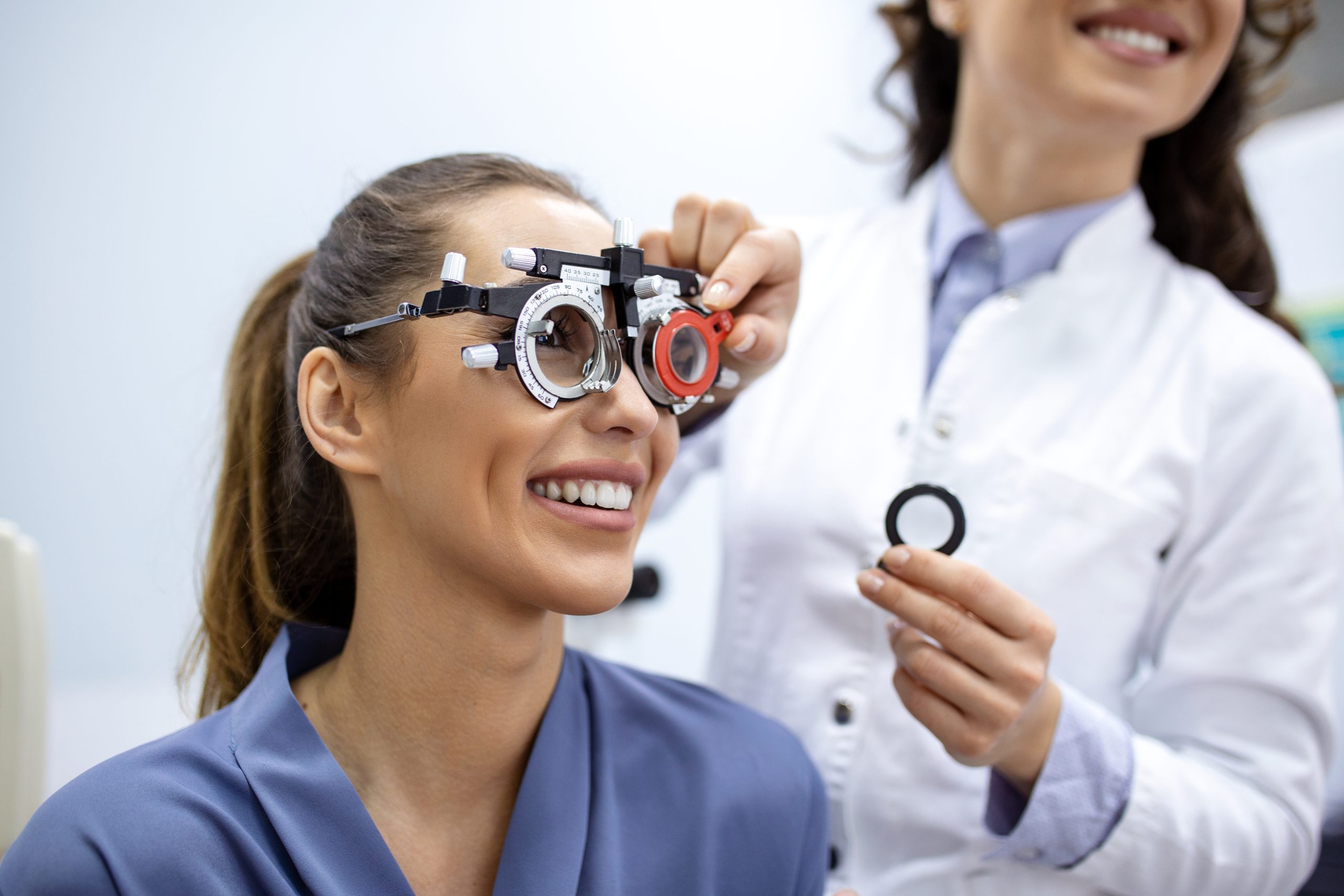The Importance of Regular Check-Ups with an Eye Doctor Optometrist
The Importance of Regular Check-Ups with an Eye Doctor Optometrist
Blog Article
Discovering the current Technological Improvements in Optometry and What They Mean for Optometrists
In the ever-evolving area of optometry, current technical advancements are reshaping just how experts come close to eye care. From the accuracy of Optical Coherence Tomography to the nuanced understandings offered by AI-driven analysis tools, these developments are setting brand-new requirements in patient evaluation and treatment. Teleoptometry is poised to redefine ease of access, guaranteeing that competence transcends geographical constraints. As these developments permeate the technique, optometrists are encountered with the difficulty of accepting these devices to improve patient outcomes. Yet, the concern remains: exactly how will these technological shifts redefine the functions and responsibilities within the career?
Developments in Diagnostic Devices
Progressing the area of optometry, developments in diagnostic devices have actually transformed the method eye treatment specialists examine and diagnose visual disabilities and ocular problems. The previous years has seen significant technical developments, allowing even more thorough and precise assessments. Optical Coherence Tomography (OCT), as an example, offers high-resolution cross-sectional images of the retina, enabling the early detection of diseases such as glaucoma and age-related macular deterioration. This non-invasive imaging strategy has ended up being crucial in modern optometric practice.
An additional key technology is the introduction of sophisticated corneal topography systems, which map the surface area curvature of the cornea with precision. These devices are specifically beneficial for suitable call lenses and diagnosing corneal problems. Electronic retinal imaging has transformed typical ophthalmoscopy, offering in-depth, breathtaking views of the retina that help with complete aesthetic examinations.
The growth of wavefront aberrometry has actually likewise been important, allowing the analysis of refractive errors with unrivaled precision (Eye Doctor). This technology helps in personalizing restorative lenses and boosting medical outcomes for refractive surgical treatments. Collectively, these diagnostic improvements encourage eye doctors to provide premium person treatment, making sure very early treatment and customized treatment strategies, eventually enhancing visual health results
AI in Patient Administration
Structure on the foundation of cutting-edge diagnostic tools, the unification of fabricated knowledge (AI) in client administration stands for a transformative jump for optometry. AI systems are increasingly employed to boost effectiveness, precision, and customization in individual care.
In addition, AI-driven platforms promote structured patient interactions and management processes. Automated scheduling, online examinations, and individualized follow-up plans not only boost person contentment but additionally optimize time management for specialists. These systems can triage individuals based upon the urgency of their conditions, making certain that those in important demand receive punctual attention.
Moreover, AI boosts decision-making by offering eye doctors with evidence-based recommendations and treatment pathways. By incorporating data from digital health and wellness documents, AI tools offer insights that educate scientific choices, decreasing the risk of mistakes and boosting client results. As AI remains to progress, its role in individual monitoring will likely broaden, reshaping the landscape of optometric treatment.
Breakthroughs in Retinal Imaging
In the realm of optometry, retinal imaging has actually observed impressive technological innovations that are enhancing diagnostic capacities and person treatment. Technologies such as Optical Comprehensibility Tomography (OCT) and fundus photography have actually transformed exactly how eye doctors envision and analyze the retina. OCT, particularly, supplies high-resolution, cross-sectional pictures of the retina, enabling for the thorough evaluation of its layers. This capacity is very useful for early discovery and administration of problems like glaucoma, diabetic person retinopathy, and age-related macular degeneration.
Enhanced imaging methods like OCT angiography are more refining diagnostic precision. This non-invasive strategy maps blood flow in the retina, offering essential understandings into vascular health without the need for color shots. Additionally, flexible optics modern technology is being incorporated into retinal imaging systems to remedy eye aberrations, supplying extraordinary photo quality. Such developments facilitate the recognition of minute retinal changes that might represent disease progression.
Additionally, innovations in expert system are augmenting retinal imaging by allowing automatic analysis of big datasets. These systems help optometrists in identifying patterns a measure of pathology, thus improving analysis precision and effectiveness. Jointly, these innovations are changing retinal imaging into a keystone of contemporary eye treatment, boosting end results and increasing healing possibilities.
Teleoptometry's Growing Role
Teleoptometry is increasingly coming to be an essential component of eye treatment, driven by innovations in electronic communication and analysis devices. As optometry embraces digital transformation, teleoptometry assists in remote consultations, allowing optometrists to expand their solutions beyond typical boundaries. This is specifically advantageous in underserved and rural locations where accessibility to specialized eye care is often restricted. By leveraging high-resolution video clip conferencing and progressed retinal imaging, eye doctors can perform extensive eye examinations from afar, making sure prompt diagnosis and treatment.
The combination of fabricated intelligence (AI) additional improves teleoptometry, enabling the analysis of aesthetic data and helping in the detection of ocular problems such as glaucoma and diabetic retinopathy. AI-powered algorithms can rapidly translate complex imaging data, supplying optometrists with valuable understandings that boost scientific decision-making.
Additionally, teleoptometry supports connection of care with seamless combination with electronic health and wellness records (EHRs), permitting Visit Website optometrists to keep extensive patient histories. This ensures that clients obtain constant and personalized care also when seeking advice from different professionals.
In spite of these advantages, obstacles stay, consisting top article of making certain data protection and taking care of person assumptions. However, teleoptometry represents a considerable stride in the direction of more accessible, effective, and patient-centered eye treatment. As modern technology advances, its duty is positioned to broaden even more.

Future Fads in Eye Care
A myriad of innovative patterns is set to reshape the future of eye care, driven by technical developments and the evolving requirements of patients. One substantial pattern is the combination of expert system (AI) in diagnostics, which promises to boost the accuracy and effectiveness of eye evaluations. AI algorithms can examine substantial quantities of information from retinal pictures, possibly detecting conditions like diabetic retinopathy and glaucoma earlier than typical methods.
Furthermore, customized medicine is acquiring traction in optometry, with genetic testing informing tailored therapy plans. This method intends to maximize person outcomes by customizing interventions to private genetic profiles. Wearable technology, such as smart call lenses, is additionally on the perspective, using real-time monitoring of intraocular stress or sugar levels, thus offering constant understandings right into systemic and eye wellness.
The adoption of enhanced fact (AR) and virtual reality (VR) in training and individual education is another arising trend. These modern technologies provide immersive experiences that can improve understanding and skills both for eye doctors and patients. As these patterns develop, eye doctors should remain abreast of technological advancements to supply innovative care, making sure better client end results and satisfaction in the dynamic landscape of eye treatment.
Verdict

Collectively, these diagnostic developments empower eye doctors to deliver remarkable client care, ensuring very early treatment and tailored therapy methods, eventually boosting aesthetic wellness outcomes.

As these technologies proceed to advance, optometrists should adapt and include them right into practice, inevitably enhancing operations efficiency and raising the criterion of eye treatment provided to individuals.
Report this page